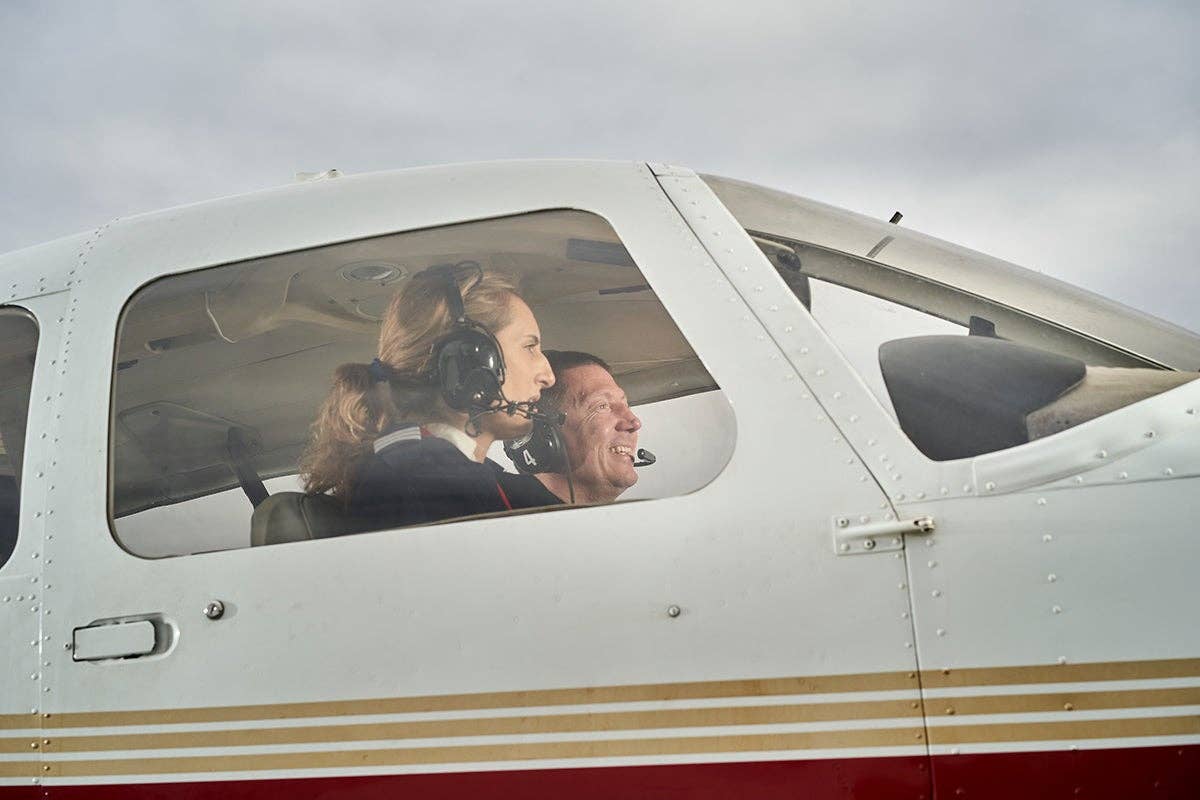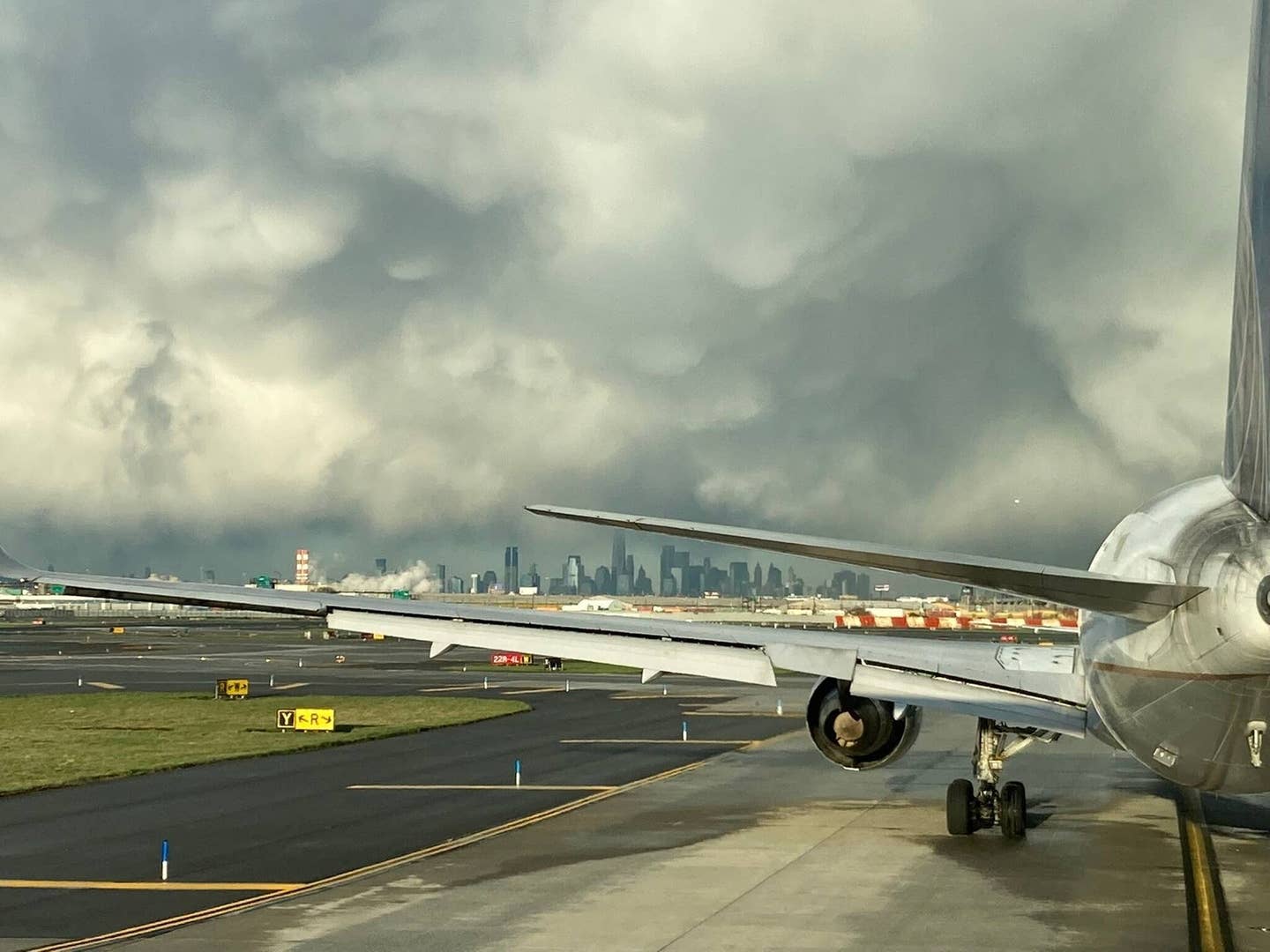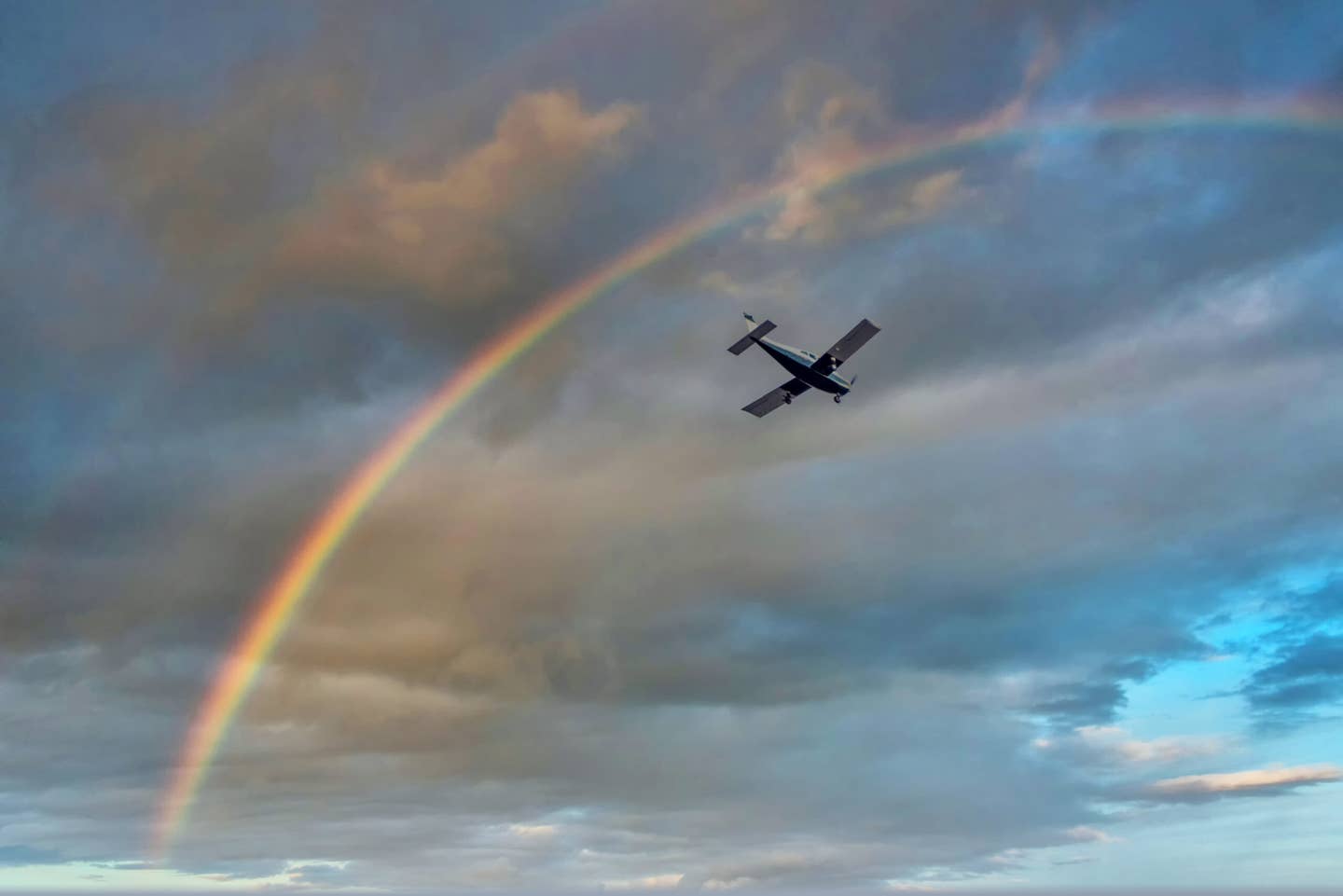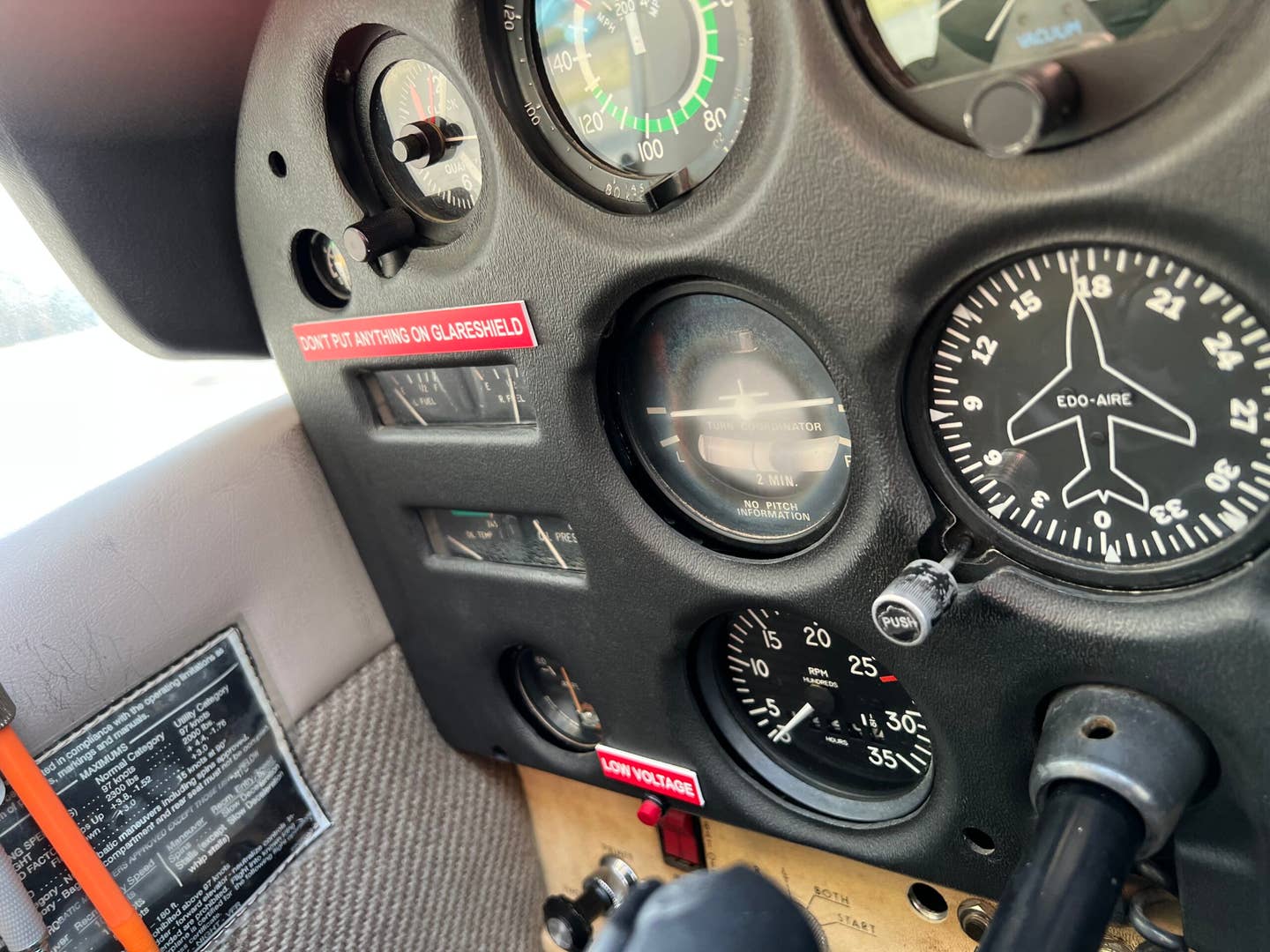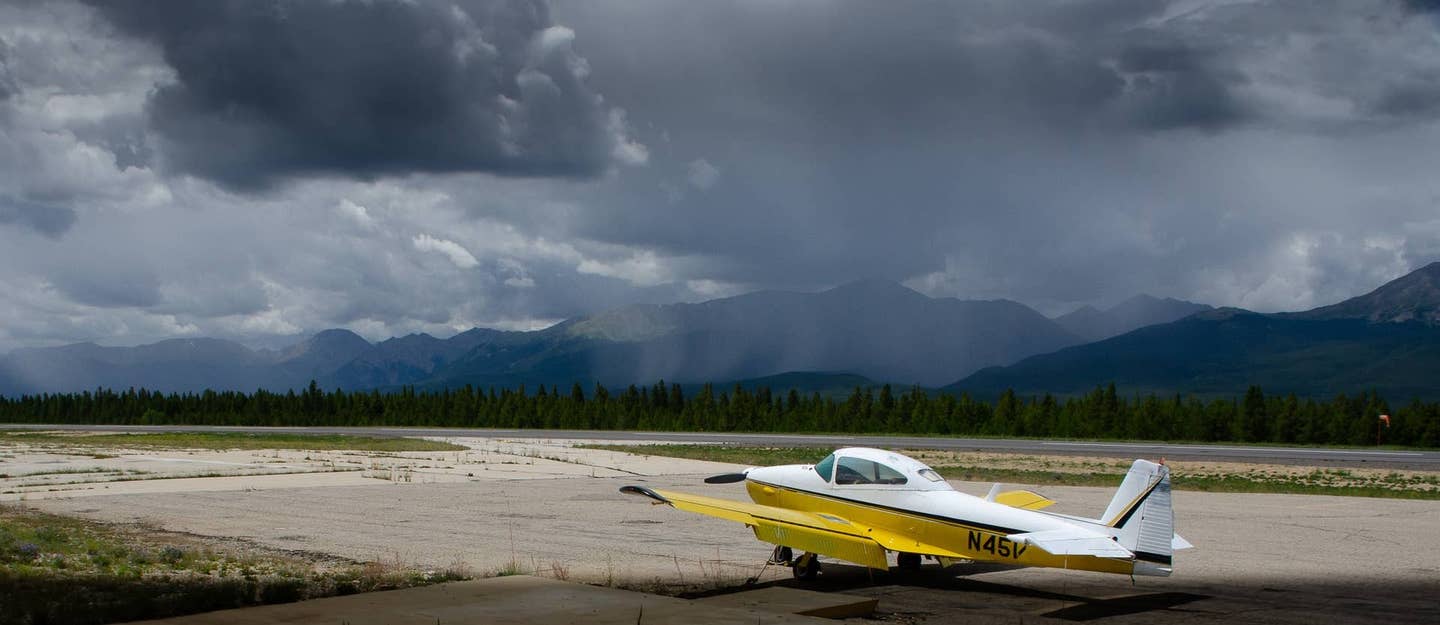
Peter, Nancy and Melmoth, July 5, 1976,
at Sapporo, Japan, after a 15-hour nonstop
flight from Alaska.
(December 2010) — High-frequency radio, used for beyond-the-horizon communication prior to the introduction of satellite relays, was subject to the whims of various ill-natured atmospheric elves and goblins; but when it was good it was very, very good, with the clarity and nuance of a fine telephone connection. So it is that I can still hear in my mind's ear, though it was nearly 35 years ago, the coaxing tone, as if the speaker were addressing an uncomprehending child, of that friendly airline pilot's voice: "No, fifty, not fifty thousand. Three hundred pounds. He is a very small airplane."
Very small indeed: a 23-foot wing carrying Nancy and me and a couple of suitcases over the North Pacific. We were on an IFR flight plan, and every hour we would make a position report — an empty ritual, in reality, since for most of the trip, in those pre-GPS days, our navigational equipment was limited to a compass and a clock. A Tokyo controller had inquired about our fuel state, and on hearing my reply of "fifty gallons remaining," he had confirmed with "fifty thousand pounds." Somewhere high above us in the darkness — it was inky night, and had been for many hours — an eavesdropping airline pilot understood that the young Japanese controller had never before spoken, and would in all likelihood never again speak, to an airplane arriving from America so scantily provided with fuel.
It was an unusual place to be, and in retrospect I am a little surprised that I did not feel more hesitation about crossing first the Caribbean in 1974, then the Atlantic in 1975 and now the Pacific Ocean, in an airplane that I had designed and built through home study and guesswork and that had first flown late in 1973. Even more puzzling was Nancy's consenting to participate in these grandiose and reckless adventures, since she had, herself, no liking for airplanes, large or small, nor the slightest love of flight; but people are full of contradictions.
That airplane, Melmoth, was an all-metal, retractable-gear two-seater with a naturally aspirated 210 hp Continental and a constant-speed prop. I had built it between 1968 and 1973 in a series of southern California backyards, and it was, as homebuilts went at the time, a pretty ambitious design. I had intended it to go long distances but, through ignorance or perversity, had failed to provide it with the most fundamental requirement of a long-range airplane: a large wingspan. It made up for its bumblebee-like proportions by carrying 155 gallons of fuel in wet wings and tip tanks. The first time it flew fully loaded was when Nancy and I took off from Gander, Newfoundland, bound for Ireland, and immediately disappeared into a 100-foot overcast. I seem to have had a great deal of confidence in my calculations.
It was on July 3, 1976, that we left Anchorage for Cold Bay, Alaska, which was to be our jumping-off place for Japan. We arrived at Cold Bay late in the afternoon, intending to stay the night. I must not have been paying much attention to the weather, because when I checked it in Cold Bay I was taken aback to learn that a typhoon in mid-Pacific was moving northward and would reach the Aleutians the next day, bringing a stretch of rain, wind and low ceilings with it. Obviously, we had to get out of there ahead of the storm, which, as long as it remained south of us, would provide a welcome and unexpected tailwind.
We had a hard time getting fuel — the airport personnel had already repaired to the local saloon to begin their bicentennial observances — but finally, at about 9:30 in the bright midsummer evening, we climbed out of Cold Bay and turned westward along the Aleutian chain. My plan was to follow the islands out to the Air Force base at Shemya, and then to use the Shemya VOR to set up a course that would keep us well clear of Soviet airspace. This was before the Soviets had shot down a Korean airliner; but though it was peacetime and I would not have imagined such a rash and heartless act even possible, I had been advised to give Kamchatka a wide berth. Avoiding the Soviet Union meant flying several hundred miles offshore and then, at some moment determined by dead reckoning, since we would be out of range of shore-based beacons, turning westward toward Japan. The detours and doglegs of our route added more than 150 miles to the great-circle distance.
Darkness fell after we had been in the air an hour or two, but not before we had discerned, high in the sky to the south, the vast, curved and oddly distinct rim of the typhoon. We cruised at 8,000 feet at 65 percent of power, using around 9 gallons an hour; thanks to the tailwind, we made good about 170 knots over the ground. This was not the best-range cruising speed, by any means; an optimal technique would have required cruising at around 45 to 50 percent of power at the start, and progressively slowing down as the airplane grew lighter. But the tailwind, which would remain with us for the entire trip, gave me the confidence to trade fuel for a little extra speed.
Having spent the previous week in Alaska and marveled at the four-hour nights, I had imagined when we left Cold Bay that the darkness would not last long; but I had not reckoned with our westward progress across half a dozen closely spaced time zones. The night, starless and opaque, unrelieved by a single light on the surface of the ocean, lasted 10 hours, during most of which Nancy slept. Alone in a world reduced to the roar of the engine, the hiss of air and the glow of instruments, I penciled our glacial progress upon an oceanic planning chart, hunted for radio signals with the ADF and kept myself awake by singing and by digging my fingernails into my palms. The NDBs along the Siberian coast were very weak, and besides, they operated on alternate days; in any case, I do not recall picking up a single reliable signal. Only once did I locate a broadcast station, and I gratefully drank in a faint Chopin nocturne until it, like everything else, was swallowed by distance and darkness. Little navigation was required, because it happened that the required heading changes coincided quite closely with the changes in magnetic variation, so that the same heading served from Shemya to Japan.
At some unknown moment during that night, we crossed the International Date Line. I like to think that it was at midnight. In any case, it was now July 5. The Fourth of July, 1976, dropped unnoticed from our lives.
Dawn finally came. Mottled, metallic, the vast Pacific stretched to all horizons, a sight that might have been terrifying under other circumstances but that now, after so much darkness, brought me a strange solace. Clouds to our right hinted at land somewhere over there, perhaps the Kuril Islands. The old mariners descried the nearness of land in the flights of gulls, the color of water and the inventory of flotsam; for us, it was the brownish tint of the air that heralded our approach to a great industrial nation. Then a ship appeared at the apex of a glittering wedge of sea-sillion, its heading identical to ours.
When my advancing pencil line, the deceptively confident-looking outcome of 10 hours of guesswork, finally attained a point southeast of the last Soviet-held island, I turned right 30 degrees; and after another 45 minutes the coast of Hokkaido, green and irregularly terraced, slipped beneath us. It had been my intention to land at Kushiro, a city on the eastern shore of the island, but because it was early in the morning the airport was closed, and the Tokyo controller ordered us to proceed to Chitose, the airport of Sapporo, 40 minutes farther south. We landed, at last, 14 hours and 45 minutes after taking off, having covered some 2,450 nautical miles, the first homebuilt airplane, as far as I know, ever to fly nonstop from the United States to Japan. Twenty-three gallons remained in the tanks.
I reflected upon the friendly fates that had suspended the prevailing westerlies for our benefit and had provided, instead, a gentle carousel ride on the rim of a gigantic storm. Suppose, though, that instead of 10 knots from behind we had had 10 knots on our nose. We would have taken two hours more, and landed with but five gallons. On the other hand, Kushiro might have been open by then. But suppose it had been 15 knots. …
I had thought — or rather fantasized — about all that. My grandfather, who was Armenian, had taught me some Russian, and I had taken more in college. I had imagined running low on fuel and diverting into Siberia, landing, rolling to a halt, opening the windows to a brisk, pine-scented breeze. Several young soldiers with machine guns approach us with the bold gait of people in authority who are uncertain of what to do next. Having traveled in Central America, I have been approached by young men with machine guns before, and am unfazed.
"Zdrastvytse," I say disarmingly. "Myi amerikanski. Kak vyi pozhyvayetse? — Hello. We're Americans. How are you?"
A Russian-speaking American, a pretty young woman, an unusual airplane — how could there be any trouble?

Sign-up for newsletters & special offers!
Get the latest FLYING stories & special offers delivered directly to your inbox

